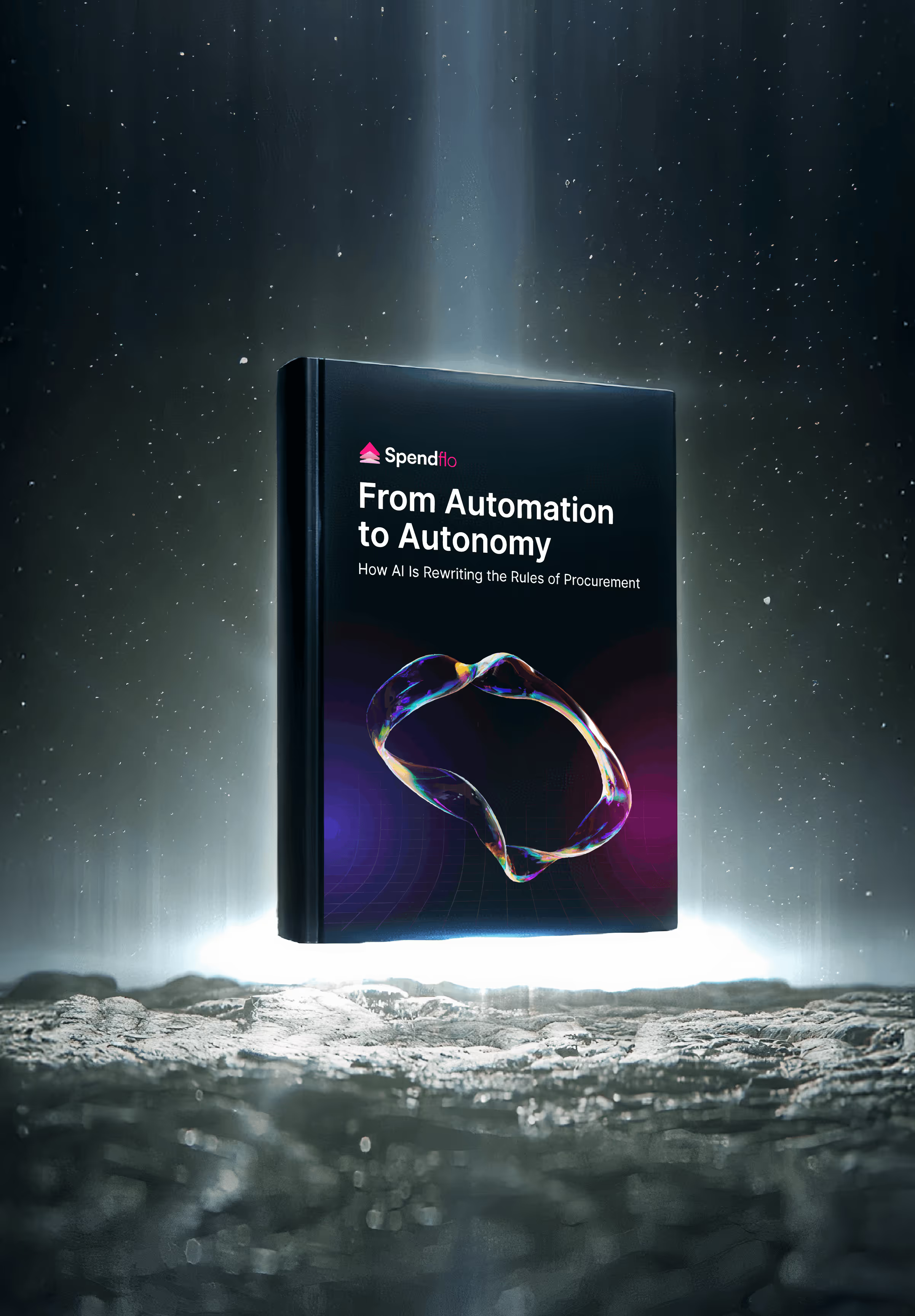

Supply Chain Order Management: An Overview

Supply Chain Order Management: An Overview
Explore how supply chain order management drives fulfillment speed, accuracy, and visibility across channels and vendors.


Every order that moves through your supply chain tells a story - of speed, accuracy, and customer promise. But when just one piece of that process breaks down - a missed update, a stockout, a delayed shipment - the ripple effects can hit everything from warehouse costs to customer loyalty. In today’s always-on, always-demanding market, order management isn’t just an operational task - it’s your frontline defense against chaos. Strong supply chain management ensures that every order flows efficiently from end to end.
What this blog covers:
- What is supply chain order management?
- Why order management is critical to supply chain success
- Core functions of an effective order management system
- Common challenges in supply chain order handling
- How to streamline order management across suppliers and channels
- Role of technology in enhancing supply chain visibility and control
- Future trends: smarter, faster order management for global supply chains
- How Spendflo helps with supply chain order management
- Frequently asked questions on supply chain order management
What Is Supply Chain Order Management?
Supply chain order management is the process of tracking, fulfilling, and optimizing customer orders from the moment they’re placed to final delivery. It connects inventory, logistics, and supplier coordination to ensure products reach the right place, at the right time, without friction.
Why Order Management Is Critical to Supply Chain Success
Without strong order management, even the most advanced supply chains can fall apart. It’s the glue that binds everything - from warehouses to delivery routes - ensuring that every piece moves with precision and purpose. Here’s why getting this right isn’t optional anymore.
Improves Customer Satisfaction and Speed
Customers expect fast, accurate deliveries - especially in the world of eCommerce. Meeting rising customer demands requires synchronized systems and smarter workflows. Efficient order management ensures that orders are processed, picked, packed, and shipped on time. That means fewer delays, fewer support tickets, and more delighted customers who come back again and again. A seamless delivery cycle significantly enhances the overall customer service experience.
Prevents Inventory Errors and Stockouts
You can’t fulfill what you don’t have - and inaccurate inventory is one of the biggest causes of delayed or cancelled orders. A robust system keeps inventory levels in check, syncs with warehouses in real-time, and triggers timely replenishment before items run out. This stability enhances broader supply chain operations and reduces downstream disruptions.
Reduces Supply Chain Inefficiencies
When orders are managed well, everything else flows better. There’s less duplication of effort, fewer data entry errors, and fewer surprises during fulfillment. With every stage aligned - from order capture to delivery - teams spend less time fixing issues and more time improving the system.
Enables Accurate Invoicing and Cash Flow Visibility
Timely order processing leads to timely invoicing. That has a direct impact on your cash flow. By linking order data with finance systems, businesses can prevent billing errors, reduce unpaid invoices, and create better visibility across revenue streams. This also improves payment collection timelines and cash flow health.
Core Functions of an Effective Order Management System
An order management system (OMS) isn’t just a digital checklist - it’s the control tower of your supply chain. A good one doesn’t just help you process orders; it helps you do it smarter, faster, and with fewer surprises. Here are the essential functions it should deliver.

Order Capture and Processing
Everything starts when an order is placed. The OMS should capture customer orders in real time - from eCommerce platforms, marketplaces, or even offline channels - and immediately begin routing them through fulfillment. Fast and accurate processing reduces delays and improves order cycle time.
Inventory and Warehouse Coordination
Your OMS should be tightly integrated with your inventory management system. This ensures you always know what’s in stock, where it’s located, and how soon it can be shipped. It enables a faster and more accurate picking process in the warehouse. It also helps with optimizing warehouse space by enabling smarter picking and replenishment and accuracy
Multi-Channel Fulfillment and Routing
Whether the order comes from a website, retail store, or third-party seller, your OMS needs to intelligently route it to the best fulfillment center or supplier. This routing logic can also support better channel revenue management strategies. This flexibility ensures optimal shipping speeds, reduced costs, and the ability to manage both direct-to-customer and B2B orders. Distributed order management helps assign orders to the most efficient fulfillment centers.
Returns and Reverse Logistics Handling
What happens after the sale matters just as much. A solid OMS should manage returns with ease - generating labels, tracking status, and restocking inventory. Auto-generating a shipping label for returns helps speed up the reverse logistics process. Smooth reverse logistics boosts customer trust and minimizes the friction often associated with post-sales experiences. A streamlined return process also reduces the burden on customer service teams.
Common Challenges in Supply Chain Order Handling
Even with good systems in place, order handling doesn’t always go smoothly. Supply chains are complex - and one small hiccup can trigger a domino effect across warehouses, vendors, and customers. Let’s look at some of the everyday roadblocks that throw things off balance.
Manual Processes and Data Entry Errors
Despite all the tech available, many businesses still rely on spreadsheets, email chains, or disconnected systems. This leaves room for human error - a missed digit here, a wrong SKU there - which can lead to incorrect shipments, delays, or billing mistakes.
Inventory Mismatches and Backorders
If inventory data isn’t updated in real time, you might sell items that aren’t actually in stock - leading to backorders or cancelled orders. Worse, your warehouse may end up overstocked with the wrong products while critical items are unavailable.
Poor Communication Across Departments
Sales, warehouse, procurement, finance - they all touch the order lifecycle. But when these teams operate in silos, it causes confusion. Without centralized updates or shared systems, things fall through the cracks: late approvals, missed delivery windows, and unhappy customers.
Shipping Delays and Vendor Coordination Gaps
Even after an order is picked and packed, problems can crop up in the handoff to logistics partners or issues third-party vendors. Lack of visibility into the shipping facility, route planning errors, or delays route planning errors, or delays from external suppliers can create bottlenecks that damage customer experience.
How to Streamline Order Management Across Suppliers and Channels
Managing orders across multiple suppliers, warehouses, and sales channels can get messy - fast. The key is creating a system that connects the dots and reduces the manual work that causes delays. Here’s how companies can streamline order flows and stay ahead.

Automate Repetitive Tasks and Approvals
Start with the low-hanging fruit: automate order confirmations, approvals, and routing. With rule-based automation in your OMS, you reduce human touchpoints and minimize errors - which means orders move faster from entry to fulfillment. Automating order fulfillment boosts consistency and reduces labor costs.
Integrate Inventory and Invoicing Systems
Your inventory, order, and finance systems should talk to each other. Sharing real-time data between them reduces costly mistakes and improves forecasting. When data flows seamlessly between them, you get accurate inventory counts, timely invoicing, and fewer mismatches between what was ordered, shipped, and billed.
Enable Real-Time Supplier Collaboration
Give your vendors access to order updates, changes, and fulfillment requirements in real time. A centralized communication system cuts down on email back-and-forth and makes it easier to handle exceptions or urgent changes on the fly.
Use Data to Forecast Demand and Seasonal Trends
Look at your sales history and past inventory movement to plan ahead. It can also help you prepare packaging material stock based on expected order volume. Smart forecasting helps you adjust inventory levels, warehouse space, spikes and seasonal changes.
Role of Technology in Enhancing Supply Chain Visibility and Control
You can’t fix what you can’t see - and in supply chain order management, visibility is everything. Technology helps you move from reacting to problems to proactively managing them. It adds speed, clarity, and coordination across the entire fulfilment network.
Cloud-Based OMS and Logistics Software
Cloud platforms give teams across departments - and even geographies - access to real-time order data. Cloud order management systems also reduce infrastructure costs and boost scalability. From inventory counts to order status, everyone stays on the same page, reducing confusion and enabling quicker decisions.
Third-Party Logistics and Integrated Delivery Networks
Modern OMS tools can sync with 3PL providers to track shipments, delays, and delivery exceptions. It also enables closer collaboration with business partners involved in last-mile fulfillment. This kind of integration reduces handoff friction and ensures coordination between internal teams and external partners.
Predictive Analytics for Replenishment and Route Planning
AI and machine learning can analyze sales patterns, shipping times, and supplier lead times to help optimize replenishment schedules and delivery routes. Artificial intelligence also supports anomaly detection in fulfillment workflows. The result? Less stockpiling, fewer stockouts, and more reliable delivery windows.
Mobile Access and Real-Time Order Tracking
With mobile dashboards and order tracking tools, your teams - from the warehouse floor to the finance desk - can monitor progress, catch issues early, and keep customers updated. That means fewer surprises, and more control.
Future Trends: Smarter, Faster Order Management
The future of order management is fast, intelligent, and hyper-connected. As global supply chains evolve, businesses are leaning into smarter tools and strategies to stay competitive.
- AI-driven systems will automate complex order orchestration decisions.
- IoT devices will provide real-time visibility across shipments and inventory.
- sustainability changes packaging and routing
- Sustainability will drive changes in packaging, routing, and supplier selection.
- Customers will expect faster, more personalized delivery options by default.
How Spendflo Helps With Supply Chain Order Management
At Spendflo, we streamline the tools and processes that power efficient order management. By centralizing SaaS procurement for logistics, inventory, invoicing, and order tracking, we help businesses reduce manual overhead and eliminate waste. Our platform gives finance and procurement teams visibility into every contract and vendor relationship - so they can negotiate smarter, renew on time, and align tools with fast-moving supply chain needs. You can manage vendor communications more effectively, including adding compliance fields like an unsubscribe link.
Whether you're managing warehouses, working with 3PLs, or scaling global fulfillment, Spendflo ensures your software stack keeps up with your operations - not the other way around.
Frequently Asked Questions on Supply Chain Order Management
What is the role of software in supply chain order management?
Software helps automate and track every step of the order process - from purchase to fulfillment - reducing errors and improving speed.
How can businesses reduce order errors in the supply chain?
By integrating order, inventory, and warehouse systems, businesses can avoid data entry mistakes and ensure that what's promised is what's delivered.
What’s the link between inventory management and order fulfillment?
Accurate inventory data ensures that orders can be fulfilled without delays or backorders, keeping both the customer and the supply chain running smoothly.
How does automation improve order handling efficiency?
Automation eliminates repetitive tasks like approvals and data updates, speeds up routing, and ensures consistency across all fulfilment channels.










.png)




.png)










.avif)





